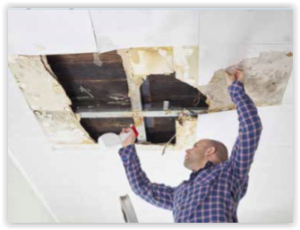DIY Danger?
THE RISKS OF OVER-THE-COUNTER MOLD TEST KITS
 From Pinterest to the DIY Network, we live in the era of do-it-yourself projects. This can be great for wedding planning or retiling your bathroom, but when it comes to your health, some things should be left in the hands of experts. DIY mold test kits boast a cheap, quick option for monitoring your building’s indoor air quality, but there are a number of reasons why DIY mold kits may be doing more harm than good:
From Pinterest to the DIY Network, we live in the era of do-it-yourself projects. This can be great for wedding planning or retiling your bathroom, but when it comes to your health, some things should be left in the hands of experts. DIY mold test kits boast a cheap, quick option for monitoring your building’s indoor air quality, but there are a number of reasons why DIY mold kits may be doing more harm than good:
No Expiration Dates
It’s almost impossible to determine how long a mold test kit has been sitting on a warehouse shelf. Few kits list an expiration date, meaning you could be wasting money on agar in the petri dish that’s not viable anymore.
Dead Spores
Settling plates produce results via mold spores growing in the agar. However, this only shows the presence of live spores. Dead spores, which can still negatively impact a person’s health, would settle in the petri dish completely undetected.
Characteristics of Different Molds
There are many species of mold, each with varying characteristics. Certain types of mold are much heavier, meaning they’ll settle in the petri dish and start growing faster. Meanwhile, other, lighter varieties of mold, including water damage indicators, may not settle in the dish during the sampling period.
Some Mold Occurs Naturally
There are many types of mold which occur naturally in a given environment. This is why professional indoor air quality experts will take multiple samples in both the area suspected of being infected and surrounding areas so they can compare the results. DIY mold kits rarely offer extra plates or provide instructions for collecting additional samples.
Lab Inaccuracies
Sampling plates only determine if there is live mold present in an area. They don’t identify the type of mold — you would need to send the sampling plate to a testing lab for an additional fee. The problem is you don’t know how qualified the lab is to run these tests, or if they’re accredited by a recognized organization. Even if the lab is reliable, the process of shipping the plate can damage the sample and produce a false negative or a false positive.
DIY mold test kits can be tempting as quick and cost-saving products, but when examined with a critical eye, it’s clear they can be extremely expensive in the long run.
